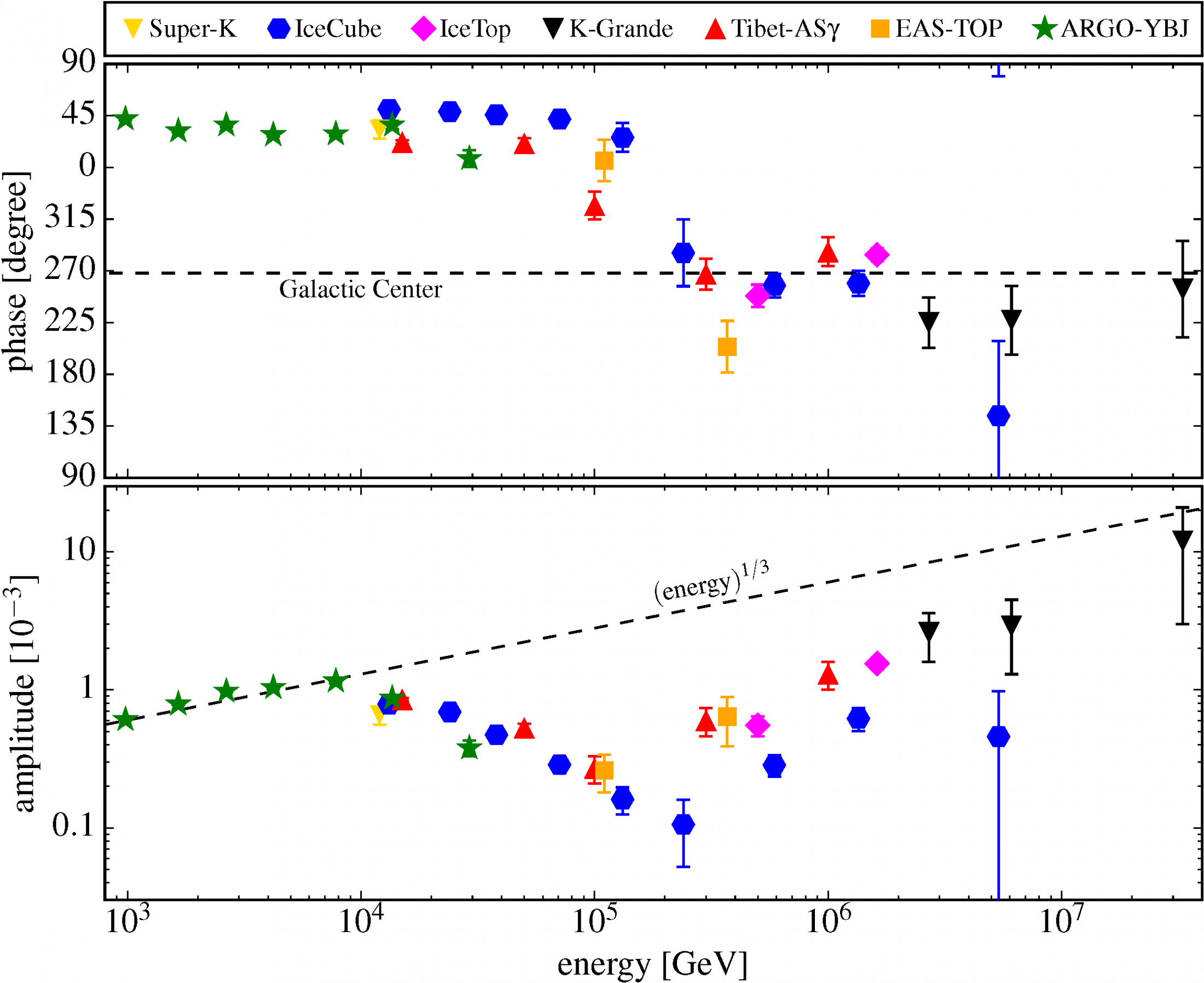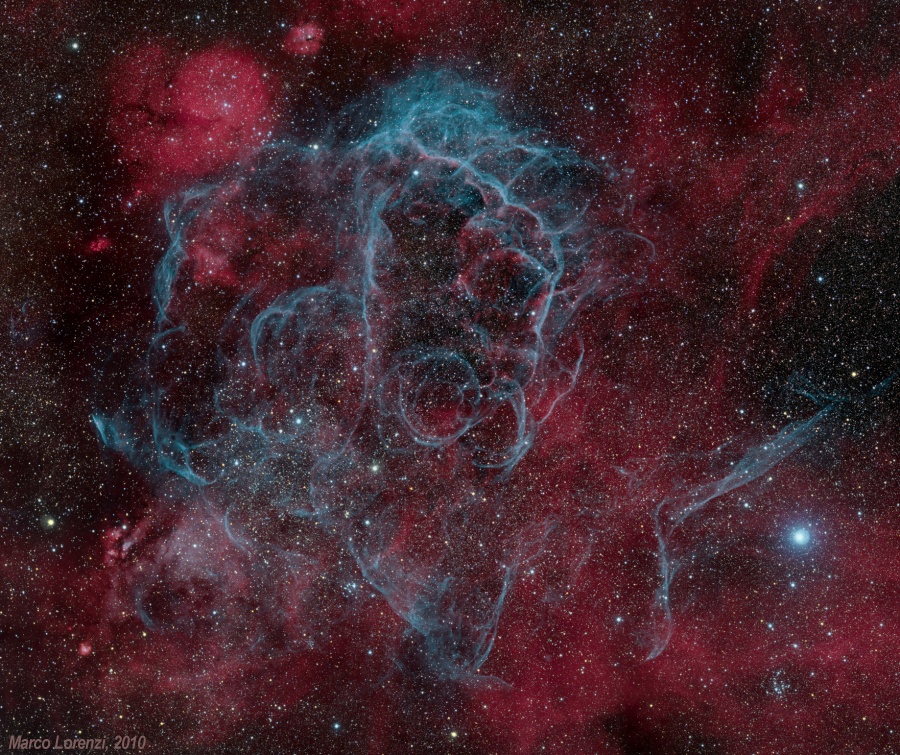Cosmic rays (CRs) are energetic charged particles that bombard Earth from every direction. Unlike gamma rays or neutrinos, CRs do not travel in straight lines, but are deflected on their long journey from distant sources by the presence of weak magnetic fields. For Galactic CRs up to a few PeV, this process results in strong diffusion that obscures the CR sources and explains the isotropic map of their arrival directions.
However, as IceCube at the South Pole and other telescopes in the Northern Hemisphere have shown, Galactic CR maps show anisotropy patterns at the per-mille level. Cosmic ray diffusion predicts the presence of a so-called dipole anisotropy, an increased rate of CRs that depends on the distribution of sources and properties of diffusion. Naively, assuming isotropic diffusion and a smooth distribution of sources, one would expect that the dipole weakly increases with CR energy and points in the direction of the Galactic center.

However, data tell a different story. The observed dipole anisotropy does not align with the Galactic center and shows strong fluctuations in the energy range from 10 TeV to PeV. A recent work by Markus Ahlers, a John Bahcall fellow at WIPAC, has shown that this behavior can be understood once the local magnetic field and the presence of local CR sources are taken into account.
Ahlers’ calculations demonstrate that a precise measurement of the CR anisotropy allows establishing the local magnetic field direction. He has also considered the effects of the Vela supernova remnant (SNR) on the CR anisotropy.
“I was puzzled and intrigued by recent measurements of IceCube that show a sudden phase flip around 100 TeV. The orientation can be understood by the presence of a local magnetic field, but the flip indicates the presence of a local source,” explains Ahlers, who is also a member of the IceCube Collaboration.
Scientists have speculated that CRs with energies up to a PeV are created in Galactic environments, such as SNRs. Among the list of known local SNRs, Vela is expected to have the strongest local contribution to the CR anisotropy. In his study, Ahlers shows that CR emissions from Vela could result in fluctuations in the dipole anisotropy with a peak around a few TeV and with a quick fall off.

“Vela is the perfect source for the dipole anisotropy: the source is in the right part of the sky and has the right distance and age such that the dipole flip appears around 100 TeV.”
Results are not yet conclusive, but Ahlers explains that he is already waiting for new anisotropy maps by the HAWC observatory that could further support this hypothesis.
+ info “Deciphering the Dipole Anisotropy of Galactic Cosmic Rays,” Markus Ahlers, Phys. Rev. Lett. 117, 151103 (2016). DOI:10.1103/PhysRevLett.117.151103
